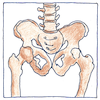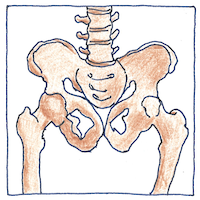Andreas Vesalius
anatomy

|
Human anatomy
Andreas Vesalius broke with medieval practice by doing his own dissections in front of students and found that Galen, in the second century A.D., dissected dogs and monkeys instead of humans. A human’s lower jaw is one bone, not two as Galen said, and a human sternum has three parts, not like an ape with its seven. Vesalius accepted Galen’s theory of the circulation of the blood, although he admitted he could not find holes between the heart’s ventricles. He found that men and women had the same number of ribs, and published illustrations of partially dissected human bodies in dramatic poses.
Bones
Ezekiel cried, dem bones gonna walk around. With a knick-knack paddywhack, give the dog a bone. Work, work, work, work your fingers to the bone. Sticks and stones may break my bones. Make no bones about it; we’re only bags of bones. Bones, bones, human bones piled up in the catacombs. Bones don’t lie; there lie the bones.
Freaks
Hooray for freaks whose hearts are on their right. Maybe they might teach us not to judge by sight. Hooray for freaks who accept us as we are. To think outside the box might not be so bizarre. Hooray for people who are not like you and me. If we cut them open it wouldn’t help us see.



Galen’s theory of the circulation of the blood included the ideas that the great blood vessels originated in the liver, that arteries carried the purest blood from the left ventricle of the heart to the higher organs, and the veins carried blood from the right ventricle to the lower organs. Andreas Vesalius’s publication De humani corporis fabrica (“On the structure of the human body”) was the beginning of modern human anatomy. It was not until 1628 that William Harvey explained the circulation of the blood.
See also in The book of science:
Readings in wikipedia: